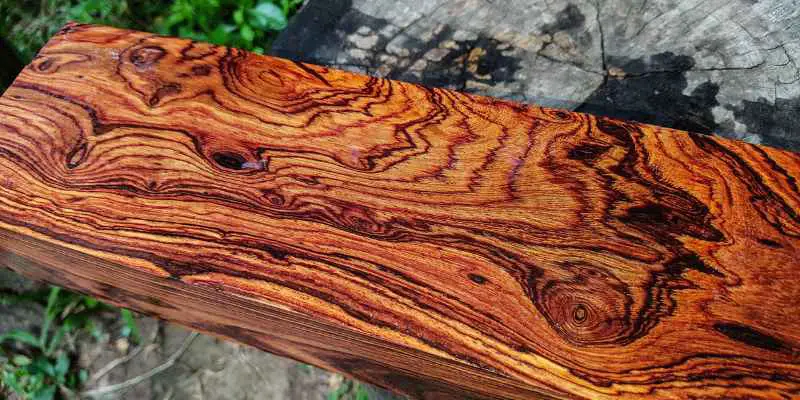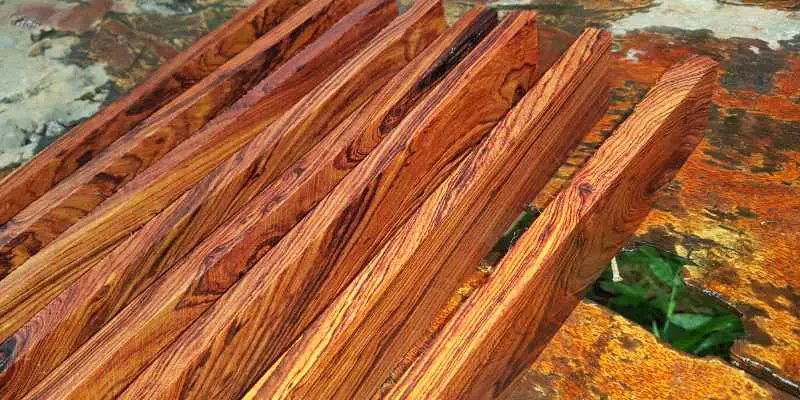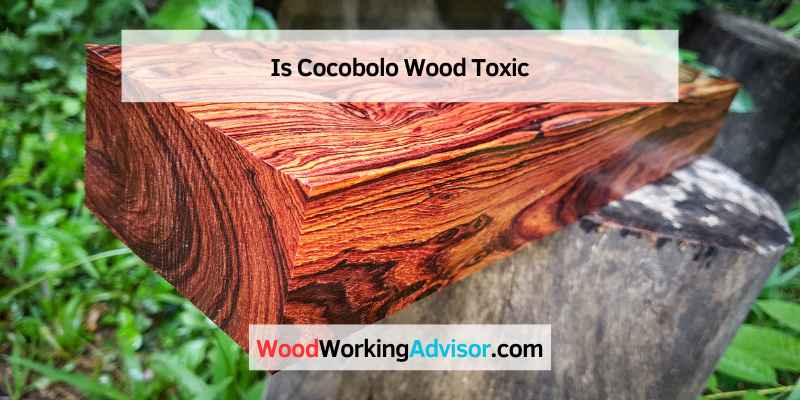Cocobolo wood is a tropical hardwood prized for its beauty and durability. Wood is often used in high-end furniture and musical instruments. While cocobolo wood is not known to be toxic, it can cause skin irritation in some people.
The irritant properties of the wood are due to the presence of chemicals called quinones. Quinones are found in many plants and cause skin irritation in some people. If you experience skin irritation after contacting cocobolo wood, wash the area with soap and water and avoid further exposure.
Cocobolo wood is a beautiful, exotic hardwood that woodworkers and hobbyists prize for its unique grain patterns and rich, dark color. But what many people don’t know is that cocobolo wood can be toxic. The oil in the wood can cause skin irritation, and if the wood is inhaled, it can cause respiratory problems.
So why is cocobolo wood still popular if it’s so dangerous? For one thing, it’s still widely available – although it’s getting harder to find as more people become aware of its toxicity. And secondly, when used correctly (i.e., with gloves and proper ventilation), it poses less risk.
If you’re considering working with cocobolo wood, take the necessary precautions to stay safe. Your health is more important than anything else!

Is Cocobolo Wood Expensive
Cocobolo wood is a tropical hardwood prized for its unique color and grain pattern. It is native to Central America, and its scientific name is Dalbergia retusa. The tree can grow up to 50 feet tall, and the wood is very dense and durable.
Cocobolo has been used for centuries in furniture making, musical instruments, turnery, and inlay work. The most notable feature of cocobolo wood is its coloration. The heartwood ranges from a deep orange-red to a purplish hue, with darker streaks of brown or black.
The sapwood is usually lighter in color, often with a yellow or cream tone. The grain is typically straight or slightly interlocked, and the texture is fine and even. Because of its beauty and durability, cocobolo wood has always been highly valued.
In recent years, however, the price of cocobolo has skyrocketed due to increasing demand and limited availability. A single board can now cost hundreds or even thousands of dollars! If you’re lucky enough to find some cocobolo for sale, be prepared to pay a high price tag.
But remember that this investment will last a lifetime – cocobolo furniture will only become more beautiful as it ages!
Why is Cocobolo Toxic?
Cocobolo is a tropical hardwood tree that grows in Central and South America. Wood is prized for its beauty and durability and is used in various applications, including furniture, musical instruments, and turning. Cocobolo is also known to be toxic.
The toxicity of cocobolo arises from two primary sources: sap and dust. The juice of the cocobolo tree contains various toxins, including quinine and d-limonene. These toxins can irritate the skin, eyes, nose, throat, and lungs.
In severe cases, they can lead to anaphylactic shock. When sanding or machining cocobolo wood, the dust can also be harmful if inhaled. It can irritate the nose and throat, as well as headaches, dizziness, nausea, and difficulty breathing.
Prolonged exposure can lead to pulmonary edema (fluid buildup in the lungs). Because of these dangers, taking proper precautions is essential when working with cocobolo wood. Always wear gloves when handling it, and use a dust mask or respirator when sanding or machining it.
If you get sap or dust on your skin or eyes, immediately wash it off with soap and water (or flush your eyes with clean water for 15 minutes).
What Wood is Poisonous to Humans?
There are a few kinds of wood that are poisonous to humans if ingested. These include yew, oleander, and jatropha. All parts of these plants are toxic, and they can cause severe symptoms such as vomiting, diarrhea, convulsions, and even death.
If you suspect someone has ingested any part of these plants, it is essential to seek medical attention immediately.
What is Cocobolo Wood Used For?
Cocobolo (Dalbergia retusa) is a tropical hardwood native to Central America. It is prized for its beautiful, variegated colors and patterns, ranging from deep reds and oranges to black and brown. Cocobolo wood is exceptionally dense and complex, making it ideal for use in high-end furniture, musical instruments, and turned objects.
It can be challenging to work with due to its density and hardness, but the results are well worth the effort.

Is Cocobolo a Good Wood?
There are a few things to consider when answering this question. First, what is the purpose of the cocobolo wood? Second, what specific characteristics of cocobolo wood make it good or bad for that purpose?
In general, cocobolo wood is considered to be a good wood. It is hard and dense, making it durable and resistant to wear. Additionally, it has a beautiful grain pattern that can add aesthetic appeal to any project.
However, there are a few potential drawbacks to using cocobolo wood. First, it can be challenging to work with due to its hardness. Second, it is an oily wood, which can cause problems with adhesives and finishes if not adequately prepped beforehand.
However, cocobolo wood is considered a good choice for many projects.
Conclusion
Cocobolo wood is a popular choice for woodworking, but some experts believe it may be toxic. The jury is still out on this one, but if you’re concerned about environmental exposure, it might be best to avoid using cocobolo wood in your projects.


